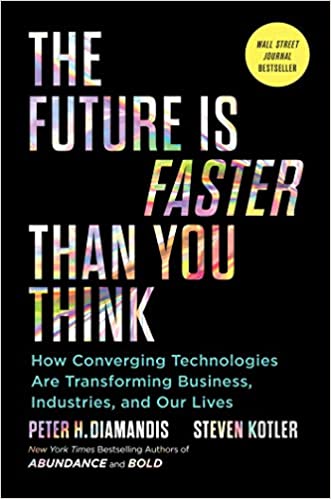
Severity Ratings for Usability Problems
Severity ratings can be used to allocate the most resources to fix the most serious problems & can also provide a rough estimate of the need for additional usability efforts.
If the severity ratings indicate that several disastrous usability problems remain in an interface, it will probably be unadvisable to release it. But one might decide to go ahead with the release of a system with several usability problems if they are all judged as being cosmetic in nature.
Frequency, Impact & Persistence
The severity of a usability problem is a combination of three factors:
Finally, of course, one needs to assess the market impact of the problem since certain usability problems can have a devastating effect on the popularity of a product, even if they are "objectively" quite easy to overcome. Even though severity has several components, it is common to combine all aspects of severity in a single severity rating as an overall assessment of each usability problem in order to facilitate prioritizing & decision-making.

Severity Rating Scale
The following 0 to 4 rating scale can be used to rate the severity of usability problems:
0 ~ I don't agree that this is a usability problem at all
1 ~ Cosmetic problem only: need not be fixed unless extra time is available on project
2 ~ Minor usability problem: fixing this should be given low priority
3 ~ Major usability problem: important to fix, so should be given high priority
4 ~ Usability catastrophe: imperative to fix this before product can be released
Severity Ratings in Heuristic Evaluation
It is difficult to get good severity estimates from the evaluators during a heuristic evaluation session when they are more focused on finding new usability problems. Also, each evaluator will only find a small number of the usability problems, so a set of severity ratings of only the problems found by that evaluator will be incomplete.
Often, the evaluators will not have access to the actual system while they are considering the severity of the various usability problems. It is possible that the evaluators can gain additional insights by revisiting parts of the running interface rather than relying on their memory & the written problem descriptions. At the same time, there is no doubt that the evaluators will be slower at arriving at the severity ratings if they are given the option of interacting further with the system.
Since each evaluator has only identified a subset of the problems included in the list, the problems need to be described in reasonable depth, possibly using screenshots as illustrations. The descriptions can be synthesized by the evaluation observer from the aggregate of comments made by those evaluators who had found each problem (or, if written evaluation reports are used, the descriptions can be synthesized from the descriptions in the reports). These descriptions allow the evaluators to assess the various problems fairly easily even if they have not found them in their own evaluation session.

My experience indicates that severity ratings from a single evaluator are too unreliable to be trusted. As more evaluators are asked to judge the severity of usability problems, the quality of the mean severity rating increases rapidly, & using the mean of a set of ratings from three evaluators is satisfactory for many practical purposes.
Problems A Good Website Solves

Heuristic evaluation is a good method of identifying both major & minor problems with an interface. Both heuristic evaluation & user testing can miss some problems, so it is best to employ both of these evaluation methods.
“Most [organizations] think the key to growth is developing new technologies & products. But often this is not so. To unlock the next wave of growth, companies must embed these innovations in a disruptive new business model.” ~ Curated Excerpt From: Peter H. Diamandis. “The Future Is Faster Than You Think.” Apple Books.
Curated via Nielsen Norman Group. Thanks for reading, cheers! (with a glass of wine & book of course)

2017 Domaine De L'agly Les Cimes Cdrv Latour Dr France
Producer: Domaine de L'Agly, Cotes du Roussillon Villages, Languedoc-Roussillon, France
"Slightly darker fruited & less floral than the Entrée du Royaume, the 2017 Cotes du Roussillon Villages Latour de France Les Cimes is a similarly styled wine, one that emphasizes silky elegance over sheer extract, yet it offers tremendous flavor & complexity. This blend is 45% Syrah, 30% Grenache, 15% Mourvèdre & 10% Carignan. Brimming with blueberries & plums, it hints at floral notes & includes a rich blend of dried spices. It's aged in 50% new oak (500-liter barrels) yet doesn't appear oaky at all, save perhaps for a soft dusting of wood tannins on the finish." ~ 95 Points ~ Joe Czerwinski ~ Robert Parker's Wine Advocate

The Future Is Faster Than You Think: How Converging Technologies Are Transforming Business, Industries, & Our Lives
By: Peter H. Diamandis & Steven Kotler
Technology is accelerating far more quickly than anyone could have imagined. During the next decade, we will experience more upheaval and create more wealth than we have in the past hundred years.
In this gripping and insightful roadmap to our near future, Diamandis and Kotler investigate how wave after wave of exponentially accelerating technologies will impact both our daily lives and society as a whole.
What happens as AI, robotics, virtual reality, digital biology, and sensors crash into 3D printing, blockchain, and global gigabit networks? How will these convergences transform today’s legacy industries? What will happen to the way we raise our kids, govern our nations, and care for our planet?
As indispensable as it is gripping, The Future Is Faster Than You Think provides a prescient look at our impending future.

